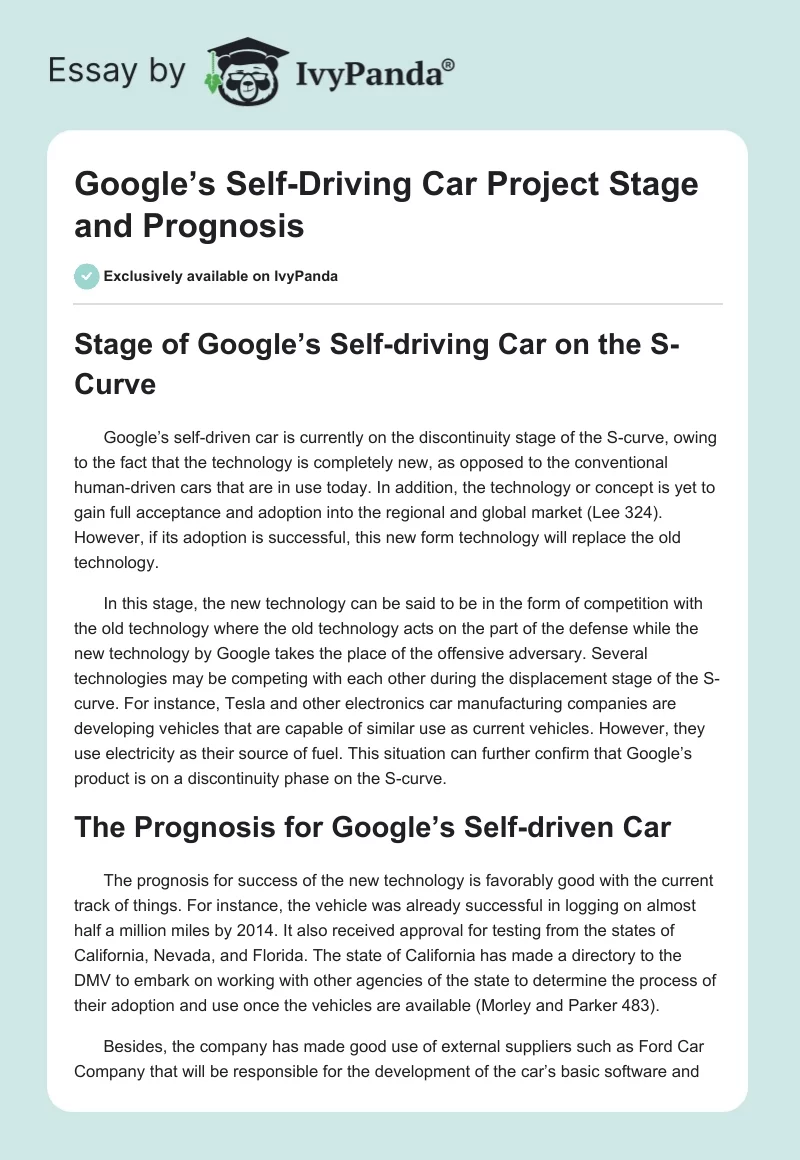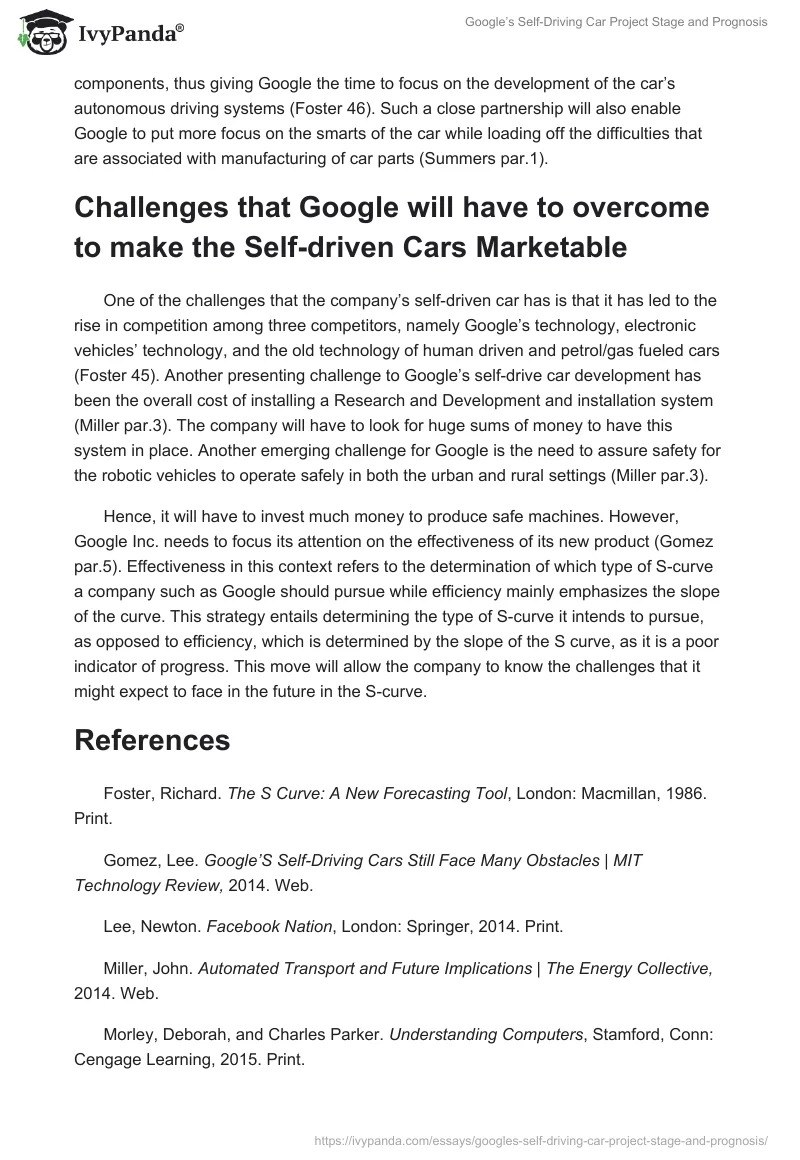Stage of Google’s Self-driving Car on the S-Curve
Google’s self-driven car is currently on the discontinuity stage of the S-curve, owing to the fact that the technology is completely new, as opposed to the conventional human-driven cars that are in use today. In addition, the technology or concept is yet to gain full acceptance and adoption into the regional and global market (Lee 324). However, if its adoption is successful, this new form technology will replace the old technology.
In this stage, the new technology can be said to be in the form of competition with the old technology where the old technology acts on the part of the defense while the new technology by Google takes the place of the offensive adversary. Several technologies may be competing with each other during the displacement stage of the S-curve. For instance, Tesla and other electronics car manufacturing companies are developing vehicles that are capable of similar use as current vehicles. However, they use electricity as their source of fuel. This situation can further confirm that Google’s product is on a discontinuity phase on the S-curve.
The Prognosis for Google’s Self-driven Car
The prognosis for success of the new technology is favorably good with the current track of things. For instance, the vehicle was already successful in logging on almost half a million miles by 2014. It also received approval for testing from the states of California, Nevada, and Florida. The state of California has made a directory to the DMV to embark on working with other agencies of the state to determine the process of their adoption and use once the vehicles are available (Morley and Parker 483).
Besides, the company has made good use of external suppliers such as Ford Car Company that will be responsible for the development of the car’s basic software and components, thus giving Google the time to focus on the development of the car’s autonomous driving systems (Foster 46). Such a close partnership will also enable Google to put more focus on the smarts of the car while loading off the difficulties that are associated with manufacturing of car parts (Summers par.1).
Challenges that Google will have to overcome to make the Self-driven Cars Marketable
One of the challenges that the company’s self-driven car has is that it has led to the rise in competition among three competitors, namely Google’s technology, electronic vehicles’ technology, and the old technology of human driven and petrol/gas fueled cars (Foster 45). Another presenting challenge to Google’s self-drive car development has been the overall cost of installing a Research and Development and installation system (Miller par.3). The company will have to look for huge sums of money to have this system in place. Another emerging challenge for Google is the need to assure safety for the robotic vehicles to operate safely in both the urban and rural settings (Miller par.3).
Hence, it will have to invest much money to produce safe machines. However, Google Inc. needs to focus its attention on the effectiveness of its new product (Gomez par.5). Effectiveness in this context refers to the determination of which type of S-curve a company such as Google should pursue while efficiency mainly emphasizes the slope of the curve. This strategy entails determining the type of S-curve it intends to pursue, as opposed to efficiency, which is determined by the slope of the S curve, as it is a poor indicator of progress. This move will allow the company to know the challenges that it might expect to face in the future in the S-curve.
References
Foster, Richard. The S Curve: A New Forecasting Tool, London: Macmillan, 1986. Print.
Gomez, Lee. Google’S Self-Driving Cars Still Face Many Obstacles | MIT Technology Review, 2014. Web.
Lee, Newton. Facebook Nation, London: Springer, 2014. Print.
Miller, John. Automated Transport and Future Implications | The Energy Collective, 2014. Web.
Morley, Deborah, and Charles Parker. Understanding Computers, Stamford, Conn: Cengage Learning, 2015. Print.
Summers, Nick. Google Wants Automakers To Help Its Self-Driving Car Project, Engadget, 2016. Web.


